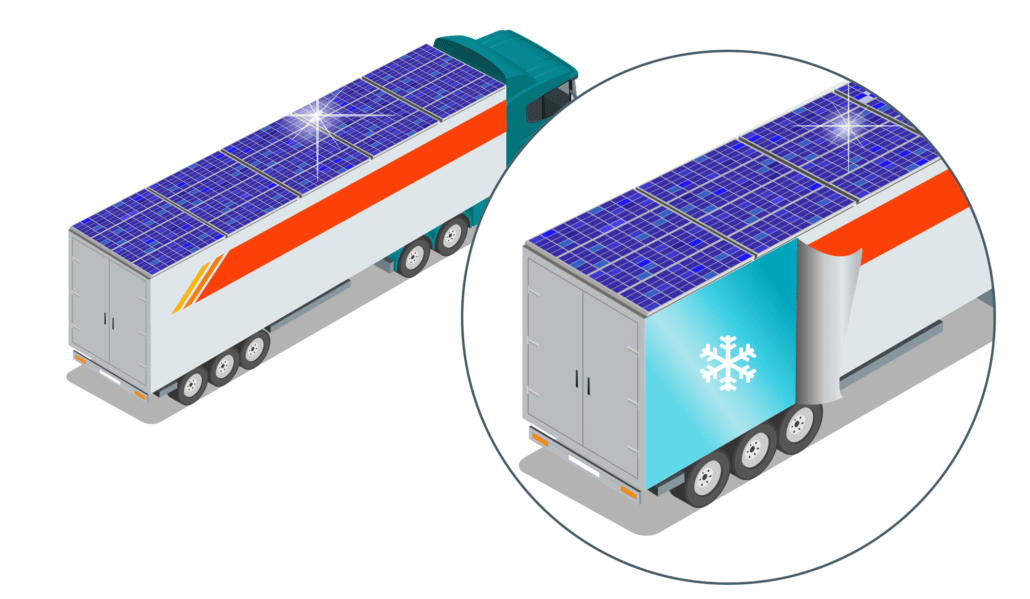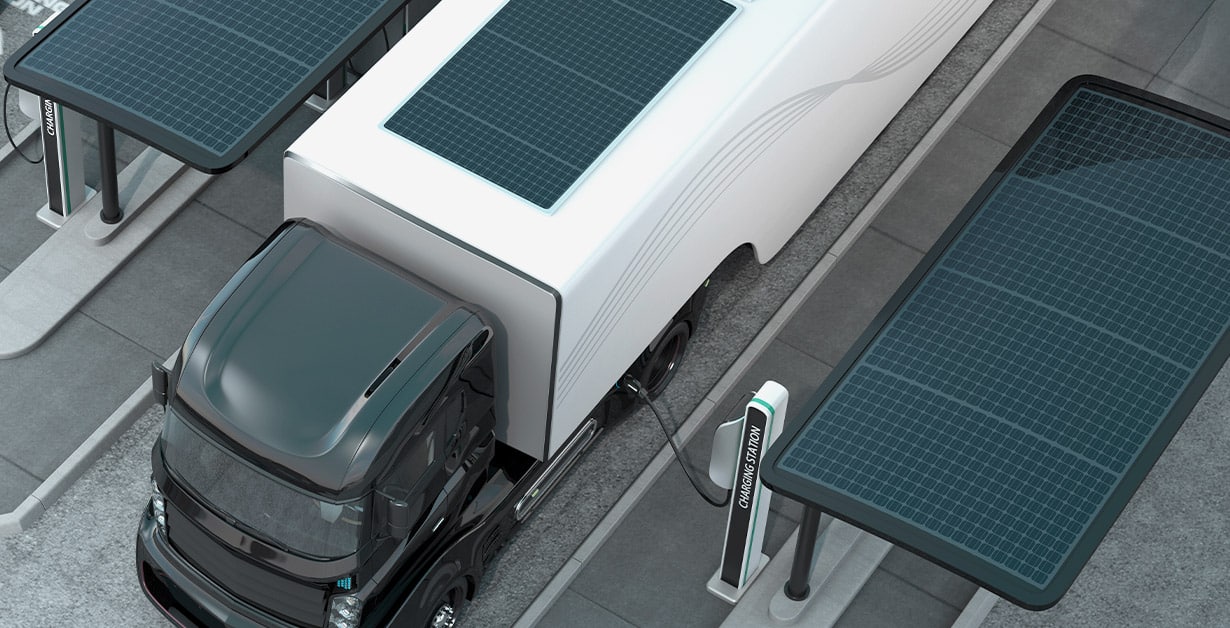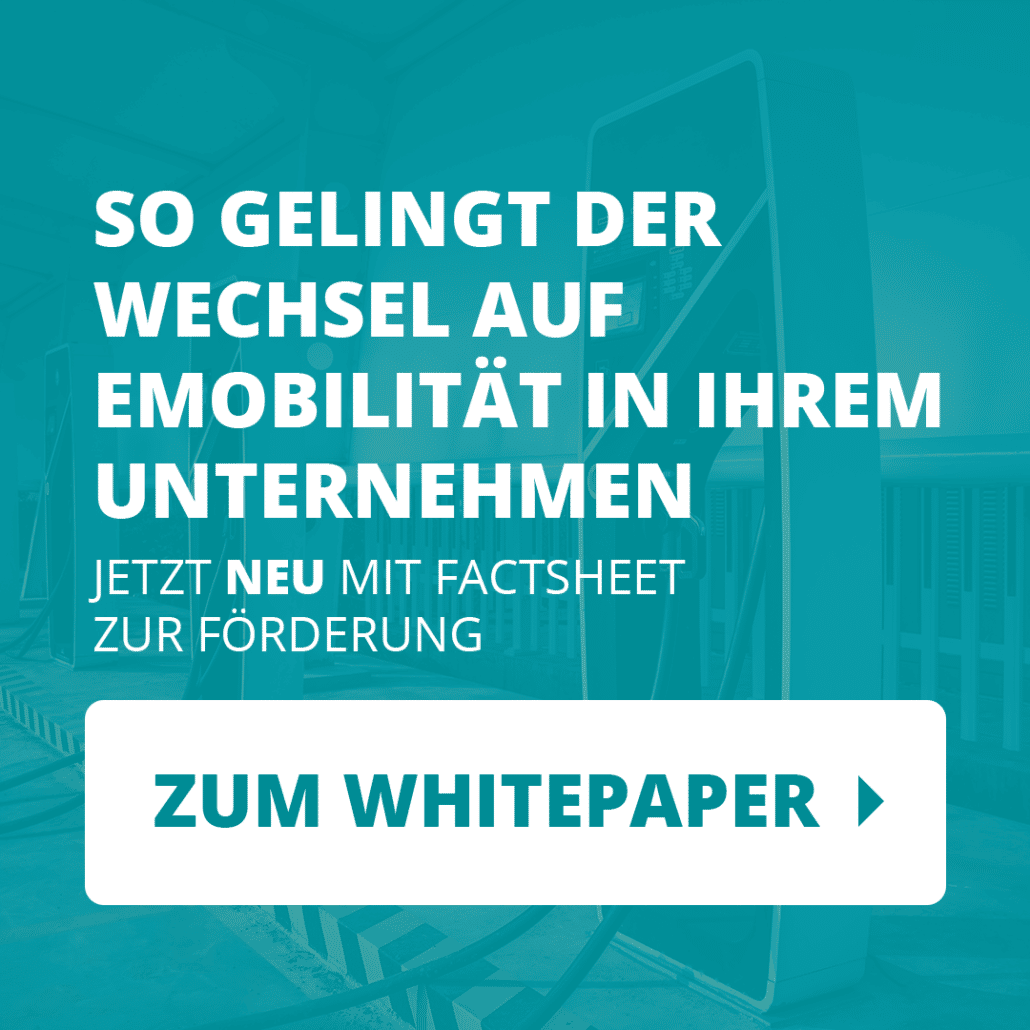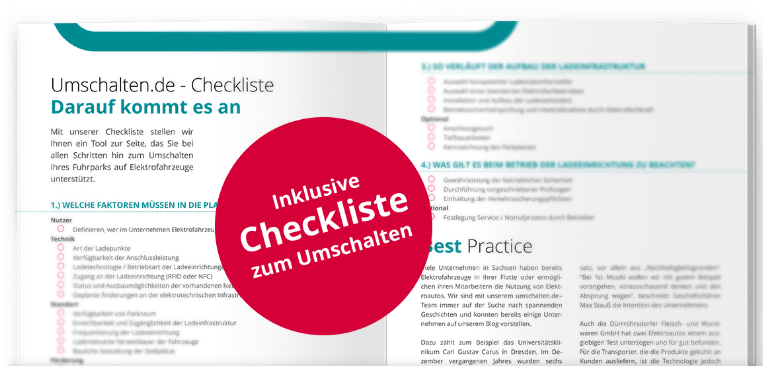Solar energy is all around us - but so far it has been virtually invisible on Germany's roads. Since 2017, Fraunhofer ISE has been researching integrated photovoltaic modules for commercial vehicles, practically the use of solar trucks. Solar panels are to be mounted on the roofs of commercial vehicles and supply electricity to power the vehicle or cool the goods. But does enough solar energy actually arrive during the journey to charge the truck battery with solar energy, for example? Aren't the panels too heavy and rigid to be safe on a truck roof? And how much potential for savings would this even offer? We talked about this with researchers at the Fraunhofer ISE Institute in Freiburg.
SOLAR TRUCKS: SAVE UP TO FIVE PERCENT ENERGY
| Truck2 | Freight railway2 | Inland vessel | ||
| Greenhouse gases1 | g/tkm | 122 | 18 | 31 |
| Carbon monoxide | g/tkm | 0,099 | 0,012 | 0,088 |
| Volatile hydrocarbons4 | g/tkm | 0,037 | 0,012 | 0,031 |
| Nitrogen oxides | g/tkm | 0,269 | 0,030 | 0,427 |
| Particle5 | g/tkm | 0,006 | 0,001 | 0,010 |
Source: TREMOD 6.03 Federal Environment Agency, 01/2020
g/tkm = grams per tonne-kilometre, incl. emissions from the provision and conversion of energy sources into electricity, petrol, diesel and paraffin
1 C02, CH4 and N20 given in C02 equivalents
2 Trucks= trucks from 3.St, articulated lorries, road trains
3 The emission factors for rail shown in the table are based on data on the average electricity mix in Germany. Emission factors based on company- or sector-related electricity purchases (see e.g. the "Umweltmobilcheck" of Deutsche Bahn AG) therefore deviate from the values shown in the table
4 without methane
5 without abrasion of tyres, road surface, brakes, overhead lines
In recent years, the researchers have worked with logistics companies to determine the irradiation potential in real logistics operations, thus supplementing the previously synthetic weather models. This has enabled them to put the economic efficiency calculations on a new footing. The researchers assume that more than five percent of the drive energy of a solar truck can be generated with vehicle-integrated solar systems. The CO2 balance of heavy-duty traffic could thus be improved by five to seven percent, the scientists predict. It currently accounts for around six percent of greenhouse gas emissions in the transport sector. And even though numerous emissions have been reduced since 1995 (for example, sulfur dioxide emissions by more than 99 percent compared to baseline levels), absolute carbon dioxide emissions have increased by more than 18 million metric tons, or 22 percent, between 1995 and 2018 (Source: Federal Environment Agency).
MORE RANGE THANKS TO SOLAR FOR TRUCKS
The Fraunhofer Institute for Transportation and Infrastructure Systems (IVI) has developed an application-specific energy forecast model especially for the project. Equipped with this, the trucks should gain a calculated 4,000 to 6,000 kilometres of additional range per year. Depending on the consumers in the vehicle and the solar power generation, the model will forecast the range, charging times and power generation for different routes.

"There is a lot of space on trucks in prime sunny locations, and large batteries are also available for electric drives - an ideal situation for generating valuable on-board energy and thus range with photovoltaics, and doing so 100 percent renewably," explains Harry Wirth, Division Director Photovoltaic Modules and Power Plants at Fraunhofer ISE. In addition to the truck battery, cooling units could also be charged in this way.
The researchers want to develop two types of modules. One type is intended for retrofitting on a truck roof. The other type is to be fully integrable into the vehicle body. For both types, special requirements apply to robustness and weight that are not found in building solar systems: The modules must be vibration-resistant, shear-resistant and bend-resistant. In addition, the weight should be limited to a maximum of 2.6 kilograms per square metre. The scientists are aiming for an area utilisation rate of more than 90 percent.
FIELD TEST: SOLAR TRUCKS DRIVING ON FREIBURG ROAD
For the trial operation of the lightweight modules, the prototypes were integrated into the box bodies of electric commercial vehicles, including refrigerated vehicles. The power electronics were also completely newly developed and installed in the demonstration vehicles. The practical test is carried out in commercial daily distribution operations in the Freiburg area. In this way, the irradiation potential of the routes driven can be determined in a measurement campaign. In addition, regular testing of the performance development and stability of the modules under real conditions is possible.
ALREADY ON THE ROAD IN SWITZERLAND: SOLAR TRUCKS FOR COOP
The Swiss supermarket chain Coop has already been working with specially converted solar trucks since 2013 and won national and international prizes for this in 2014 and 2016. The batteries of the all-electric truck are charged with water current, and when the battery is fully charged, the vehicle has a range of 240 kilometres. Two further advantages: The photovoltaic system on the roof provides additional power, and the truck runs almost silently. Despite its payload of 6 tonnes, the Coop Solar truck consumes only a third of the energy of a diesel truck - locally completely emission-free.
WILL SOLAR TRUCKS SOON GO INTO SERIES PRODUCTION?
It will probably be a while before the solar trucks go into series production and can be seen more often on German roads. To ensure that the research project bears fruit, the researchers are developing a process for series production. Together with partners from logistics and industry, Fraunhofer ISE is creating a manufacturing process flow for the economic production of PV-active box bodies and analysing the production costs as well as the economic efficiency for users. "We not only want to develop the technology, but also show that trucks can cover more than five percent of their drive energy with solar energy," says Wirth, summarising the project goal.
The German Logistics Association also recognizes that new models and routes are needed and sees a CO2 reduction potential of over 70 percent in the electrification of heavy trucks over 12 tons, for example. But what do you think - are solar and electric trucks the future of goods transportation on the freeways? Send us your opinion to !





